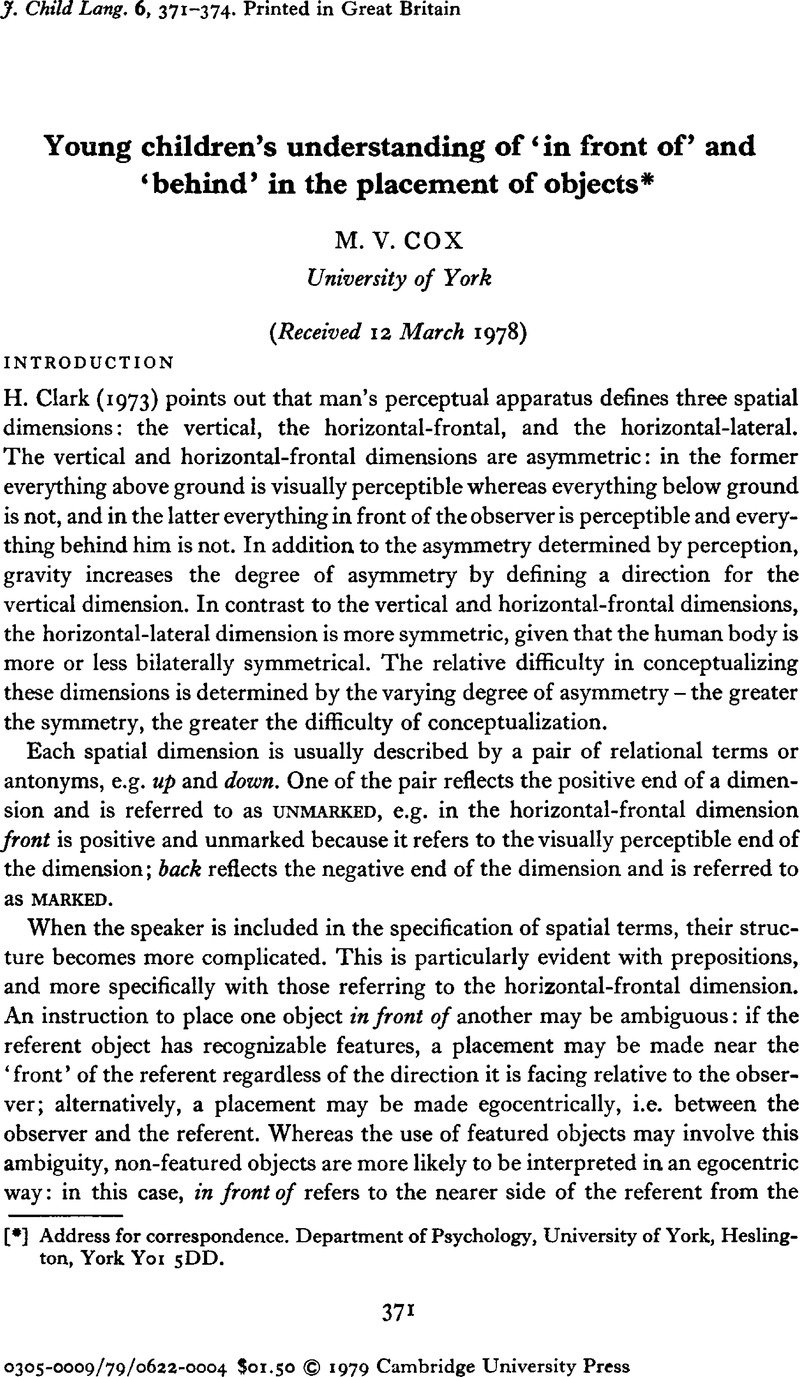Crossref Citations
This article has been cited by the following publications. This list is generated based on data provided by Crossref.
Richards, Meredith Martin
and
Hawpe, Linda S
1981.
Contrasting patterns in the acquisition of spatial/temporal terms.
Journal of Experimental Child Psychology,
Vol. 32,
Issue. 3,
p.
485.
Abkarian, G. G.
1982.
Comprehension of deictic locatives: The object ?Behind? it.
Journal of Psycholinguistic Research,
Vol. 11,
Issue. 3,
p.
229.
Blewitt, Pamela
1982.
Advances in Child Development and Behavior Volume 17.
Vol. 17,
Issue. ,
p.
139.
Osuji, Oluigbo Nathan
1982.
Constructing Complex Geometric Patterns.
Journal of Cross-Cultural Psychology,
Vol. 13,
Issue. 4,
p.
481.
Abkarian, G.G.
1984.
Procedural influences on auditory comprehension: A second look at the Revised Token Test.
Journal of Communication Disorders,
Vol. 17,
Issue. 2,
p.
101.
Cox, M. V.
1985.
Deictic and Nondeictic Interpretations of 'in front of' and 'behind' in Fronted Object Tasks.
International Journal of Behavioral Development,
Vol. 8,
Issue. 2,
p.
183.
Cox, Maureen V.
and
Isard, Sarah
1990.
Children's deictic and nondeictic interpretations of the spatial locatives in front of and behind.
Journal of Child Language,
Vol. 17,
Issue. 2,
p.
481.
Bavin, Edith L.
1990.
Locative terms and Warlpiri acquisition.
Journal of Child Language,
Vol. 17,
Issue. 1,
p.
43.


